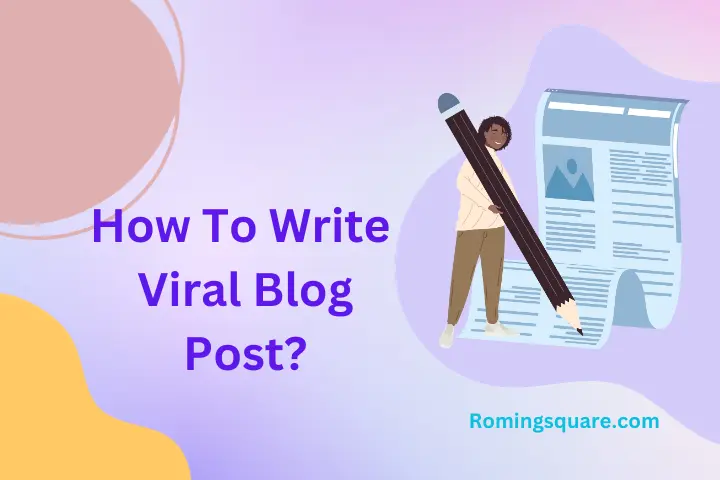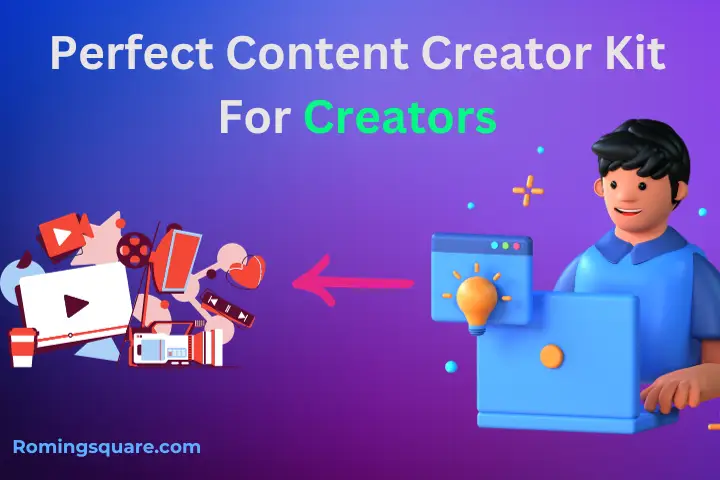
If you want to grow your blog’s reach and authority, creating viral blog post content that gets widely shared should be a top priority. But how exactly can you craft blog posts that attract attention and links in 2024?
In this comprehensive guide you’ll get tips, strategies, and a proven formula for writing blog content that captures interest and drives shares across social media and the web.
Why Go Viral?
🎯 The Benefits of Creating Shareable Content
Before diving into the “how”, let’s look at the key reasons you should aim to produce viral blog content:
- Boost referral traffic from shares and links
- Increase brand visibility and awareness
- Establish expertise and authority on topics
- Grow your subscriber base and email list
- Generate long-term organic search visibility
- Monetize through ads and affiliate programs
Writing stellar blog posts that get widely cited and shared should be a cornerstone of your content strategy. Implementing the tactics in this guide will help you create that special type of evergreen content consistently.
Detailed Process Breakdown
🧰 Step-by-Step Blueprint for Viral Content
Let’s do a deeper dive into the specific steps for creating viral blog posts:
Brainstorm Potential Topic Ideas
🗒️ Generate a broad list of initial ideas aligned to your niche. Look for topics that:
- Are timely, trending in your industry
- Spark debate and discussion
- Help solve problems for your audience
- Would make readers react emotionally
Research Keyword Opportunities
🔎 Use keyword research tools to analyze search volume and competitiveness for the ideas on your list.
Prioritize topics with:
- High search volume
- Low competition
- Relevant long-tail keyword variants
Refine your list down to the best topics based on this research.
Create a Content Outline
📋 Map out the structure and flow of your post by creating a detailed outline:
- Intro paragraph with hook
- H2 and H3 headings for key sections
- Supporting points per section with facts/data
- Quotes, examples, stories to include
- Visual components like images, charts, etc.
- Meta description summarizing the post
Fleshing out an outline provides a content blueprint before writing.
Optimize for Search Intent
📈 Ensure your post delivers on searcher intent for your target keywords:
- Answer questions searchers have
- Provide relevant how-to advice
- Go in-depth on the topic
- Include keywords naturally in content
Writing valuable, useful content tailored to intent drives organic traffic.
Make Content Scannable
📋 Format your post for easy skimming:
- Use short 1-3 sentence paragraphs
- Break up text with subheadings
- Incorporate numbered and bulleted lists
- Use bold and italics for key points
- Insert relevant graphics and visuals
Optimizing flow and formatting boosts reader engagement.
Promote and Amplify Reach
🚀 Actively extend the reach of your published post:
- Email subscribers and previous customers
- Run ads targeting interested users
- Pitch influencers for backlinks
- Share across your social channels
- Guest post on industry sites
- Syndicate on third-party platforms
Ongoing promotion is key to driving viral interest over time.
Analyze and Optimize
📈 Track performance and double down on what works:
- Review social sharing and links gained
- Check search traffic and rankings
- See which sections get engaged
- Monitor click-through rates
- Identify high-performing topics and formats
Use data to continually refine your viral content strategy.
Pitfalls to Avoid
❌ Mistakes That Hurt Viral Potential
Here are some common blogging pitfalls that can hinder your ability to create share-worthy content:
- Always chasing trending news – focus on evergreen value
- Over-optimizing for keywords – prioritize user experience
- Too much self-promotion – provide impartial value
- Writing boring, factual content – infuse personality and opinions
- Publishing infrequently – consistency and regularity matter
- Blocking site with popups and ads – don’t sacrifice UX
- Ignoring feedback and analytics – data reveals what resonates
- Neglecting promotion – viral content needs amplification
Avoid these mistakes to maximize the impact and reach of your blog posts.
Ever wondered about the secret recipe for crafting an engaging blog post? 📝
According to a survey by Orbit Media involving 1000+ bloggers, it appears that the art of blogging has evolved over time. 📈
In the early days, bloggers could whip up a post in around two and a half hours. Fast forward to 2021, and the average time to write a post has ballooned to 4 hours and 1 minute.
Surprisingly, bloggers are now dedicating a whopping 67% more time to their blog posts compared to 2014. 😲
Moreover, it’s not unusual to find bloggers investing over six hours in crafting their content. In fact, three years ago, only 1 in 20 bloggers spent this amount of time, but today, it’s 1 in 8.
Clearly, the blogging landscape is evolving, with content creators pouring their hearts and souls into their work more than ever.
Also check: 10 Proven Ways to Substantially Increase Traffic To Your Blog
Expert Tips to Level Up Results
🏆 Advanced Tactics for Viral Content Pros
Ready to take your viral content game to the next level? Here are some pro-level tips:
- Hook Readers With a Vivid Opening: Paint a picture by opening with vivid descriptions, an intriguing scenario, or captivating dialogue. Immerse readers instantly.
- Infuse Your Personality and Passions: Let your authentic self shine through. Share personal stories, be transparent about challenges, and champion issues you care about deeply.
- Spice Up Content With Humor: People love sharing entertaining content that makes them chuckle and smile. Weave in humor naturally when it fits the topic.
- Feature Authority Interviews: Include quotes from Q&As with industry experts and authorities. Their insights add credibility while being share-worthy.
- Tap Emotional Triggers: Trigger emotions like joy, fear, pride, anger. Emotive content gets stronger reactions and shares on social media.
- Contrast Ideas for Surprise: Present contradictory viewpoints or challenge assumptions. Surprising readers stimulates curiosity and commentary.
As you master these advanced tactics, you’ll discover new levels of viral content success.
Final Review
📝 Key Steps to Recap
Before you start creating viral blog posts, let’s recap the process:
- Find exciting trending topics in your niche
- Research keywords with targetable search volume
- Create compelling headlines and introductions
- Structure posts with scannability in mind
- Include visuals and multimedia
- Focus on providing maximum value to readers
- Promote content aggressively across channels
- Analyze metrics to determine what works
- Avoid common blogging pitfalls
- Implement pro tips as you advance
Now you have a proven framework for coming up with ideas, writing posts optimized for virality, and distributing your content for high social engagement.
The more you experiment and practice these strategies, the more skillful you will become at creating blog posts that get widely shared and linked across the internet.
What tips are you most excited to try out?
FAQs
What are some good tools for identifying trending blog topics?
Tools like BuzzSumo, Semrush, Ahrefs, and Ubersuggest provide insights into trending and highly-shared content that can uncover viral blog topic ideas. Monitoring discussions on Reddit and Quora is also useful.
How long should my blog posts be for maximum sharing?
Aim for blog posts between 1,500 – 2,500 words long. Posts of this length have enough room for in-depth analysis while still being digestible for readers. Ultra-short or super long posts tend to get relatively less social traction.
Should I use numbered lists or bullet points in my blog posts?
Yes, using numbered lists and bullet points makes scanning easier for readers. Breaking up long sections into bite-sized highlights via lists improves the readability and skimmability of content. Just don’t overdo it.
What is a good keyword density for SEO in my blog posts?
A keyword density between 1-2% is ideal for a blog post. This ensures your core keyword appears naturally without over-optimizing. Focus on quality content rather than forcing in keywords. The right balance ensures your pages rank well and provide value.





